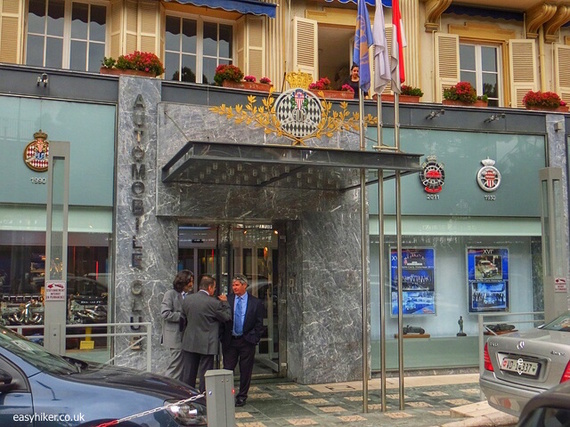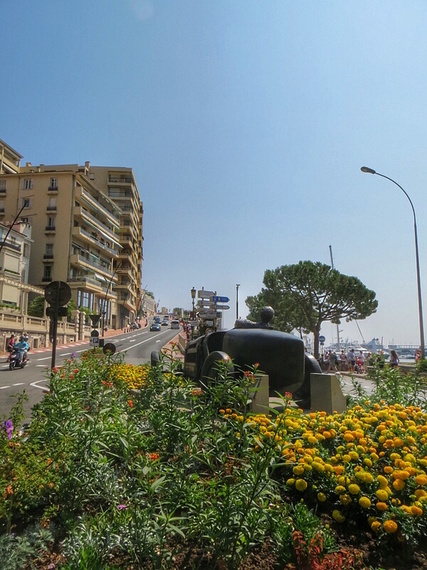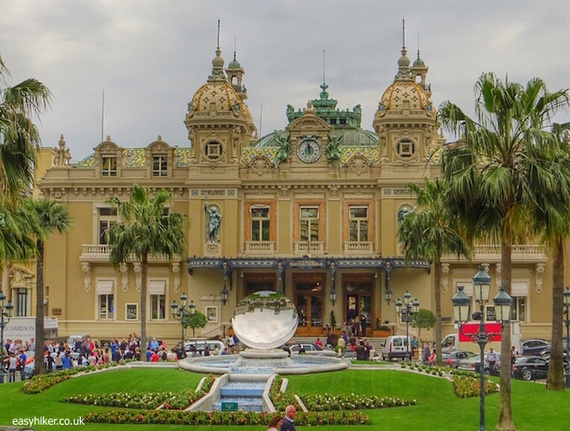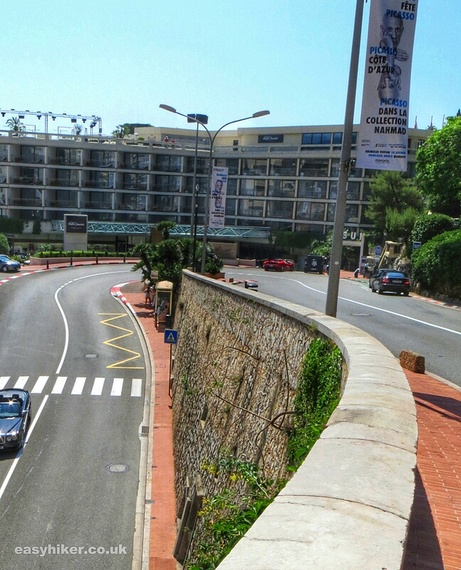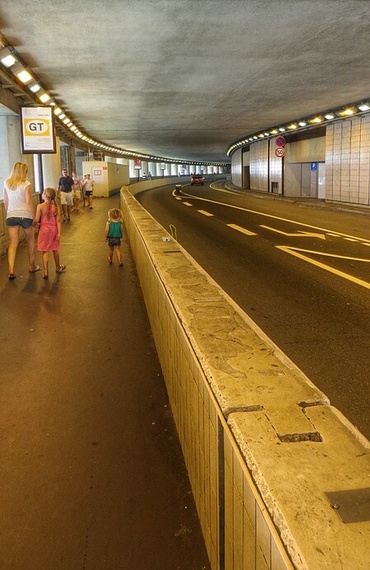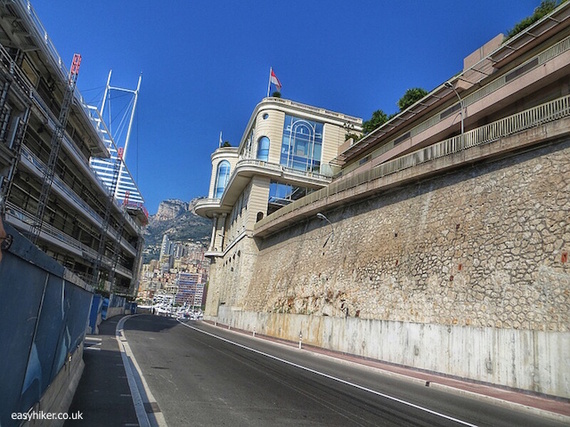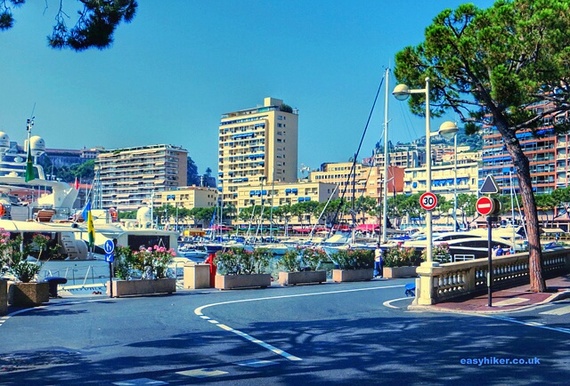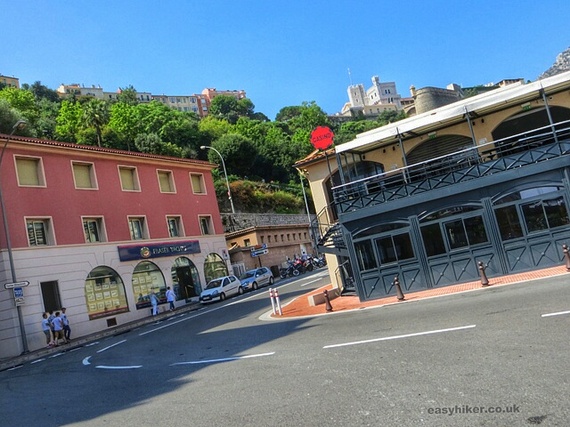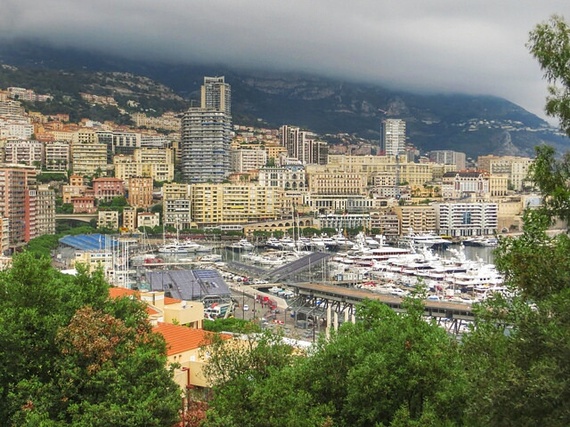The Formula One Grand Prix of Monte Carlo - which is held again next weekend (21-24 May 2015) - may well be the world's most glamorous sporting event, but its arena remains (outside of the actual competition) one of the most accessible venues of all. Nowhere else can you just walk onto the "field of dreams" any day of the week to bask in the glory of sporting history.
The fastest cars will complete the 2-mile lap around the Monte Carlo circuit in about 75 seconds. You will need a little longer, but if you are up for it, here is where to go.
Start your walk right down the middle of Boulevard Albert 1er: this is where the checkered flags go up and down, right outside the offices of the Automobil Club de Monaco.
When you walk out of Monaco train station, you will find the spot a couple of hundred meters on your right.
Now walk back in the direction of the station for the first turn of the race, the so-called St Devote (named after the chapel in front of the station), notorious for the large number of accidents it has caused through the decades, even though most of these were of the harmless variety and mainly pile-ups immediately after the start.
Walk right up the Avenue d'Ostend - this stretch is called Beau Rivage ...
... and follow the street through its long left-hand curve before taking a sharp right-hand turn into the Avenue des Beaux Arts past Casino Square.
Continue straight into Avenue des Spélugues and turn right at the end, walking down to the slowest section of the course, actually the slowest section of any course in present-day F1 racing.
This is the famous Fairmont Hairpin (formerly the Loews Hairpin and before that the Station Hairpin). There were days when cars attempted to overtake here, probably because the other cars seemed so temptingly slow.
Although the sheer dimensions of modern racing cars no longer allow such manoeuvres, accidents still occur frequently here - like on the first lap of the 2000 race when Pedro de la Rosa's Arrows spun around and blocked the track for the following traffic. Only nine cars finished the race on that day, a record low.
After a double right-hander, the so-called Portier, the cars now enter the famous tunnel, the only one in F1 (apart from a much shorter one in Abu Dhabi's Yas Marina Circuit).
This tunnel is known to cause a range of problems to the drivers: firstly, the cars become difficult to handle because they lose roughly a quarter of their downforce in the tricky, semi-subterranean areodynamic conditions. Secondly, of course, there is the weather: on sunny days, the drivers' eyes take nearly as long to adjust to the changing light as they take their cars to come out on the other end. On rainy days, the tunnel stays dry while everything outside is wet.
Out of the tunnel, with the Princess Grace Theatre high up on your right hand side ...
... you are approaching the location of the Nouvelle Chicane, added to the track in the redesigns of 1973 and 1976, the only place where it still appears possible to overtake. Consequently, this has been the site of several large accidents, including that of Karl Wendlinger in 1994, Jenson Button in 2003 and Sergio Perez in 2011.
On the last section of the straight that follows the tunnel, the most recent of Monaco's (altogether 4) fatal accidents occurred: this was in 1967 when Lorenzo Bandini crashed his Ferrari upside down into the straw bales, immediately bursting into flames while fire marshals stood helplessly by. When they eventually managed to drag Bandini's burning body away from the wreckage, it was already too late, and he died a day after in hospital.
Poignantly, one year before that, Bandini - in his capacity as the F1 racing adviser to the movie Grand Prix - had suggested to director John Frankenheimer to use this exact spot as the location for the movie's great showpiece accident.
Immediately behind the accident spot, there is the Tabac corner (named after the tobacconist who once operated on the other side of the street), a tight left-hander for which the drivers only slow down to about 200 km/h ...
... before accelerating back up to 225 km/h for Piscine, the left-right combination of turns around Monaco's public swimming pool.
This is where Alberto Ascari - still the only Italian ever to win the F1 crown in a Ferrari - drove his car into the sea in 1955, miraculously escaping with only a broken nose. (He was rescued by the crew of Aristotle Onassis's private yacht.) Only four days later, Ascari suffered a fatal accident at a sports car race in Monza.
Almost immediately behind Piscine, you will arrive at the tight right-hander called Rascasse. If you want to follow F1 action at close range, this is where you should stand during the Grand Prix: nowhere in F1 racing are spectators allowed to come this close to the track.
In the 2006 qualifying, they would have been able to witness a rather curious spectacle when Michael Schumacher appeared to deliberately stall his car to slow down two other drivers behind him (Fernando Alonso and Mark Webber) who were threatening to improve his qualification time and send him back on the starting grid. (This is also where the pit lane starts on race days, above the restaurants on your right hand side.)
Now into the Antony Noghes right-hander, leaving the statue of 5-time world champion Juan Manuel Fangio on your right hand side ...
... down the stretch where in 1970 Jack Brabham, seemingly destined for victory in the last curve of the last lap, crashed his car into the wall, handing the win to Jochen Rindt.
And that's it: after a short sprint... you have arrived at the finishing line.
In the unlikely event that nobody expects you there with a bottle of champagne, drinks are served one level below in a row of outdoor bars that are surprisingly inexpensive, considering their location and the views they provide across the most glamorous harbor in the world.
Michael Schuermann aka Easy Hiker has more suggestions on where to go in Monaco here.
